Street Fighter vs. Mortal Kombat: The Many Ways the Crossover Almost Happened
Street Fighter will take on practically any property out there except Mortal Kombat. Why haven't these two giants crossed paths in the past three decades?
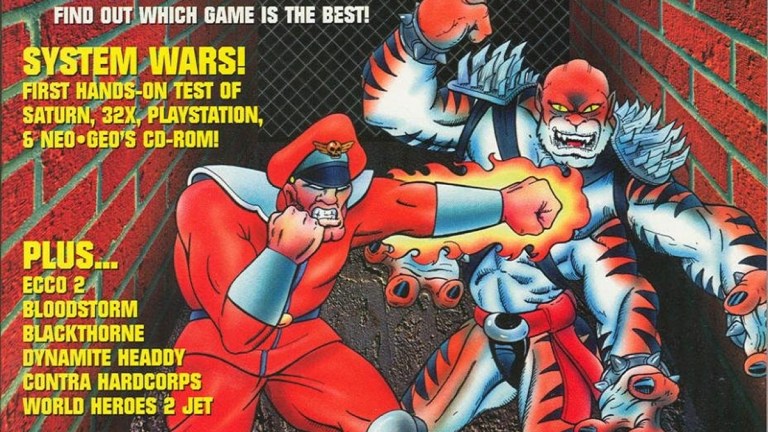
Street Fighter II: The World Warrior, the game that really kickstarted the fighting game genre, has turned 30 this year. To celebrate, Ryu and Chun-Li are appearing in Fortnite. It’s par for the course for Ryu, who has been in so many crossovers to fight everyone from everywhere. Ryu has crossed over with the cast of Tekken, the guys from King of Fighters, the Marvel superheroes, just about everyone under the Nintendo banner, GI Joe, Power Rangers, and even Family Guy for some odd reason. Ryu and Street Fighter have crossed over with nearly everyone.
Yet for some reason, the number one dream fighting game match-up has never happened. Yes, we’re talking about Street Fighter vs. Mortal Kombat. These two giants of the fighting game industry have never exchanged blows despite being household names from the very beginning of the fighting game boom of the early 1990s.
That doesn’t mean there haven’t been some close calls or that they haven’t brushed shoulders in the past…
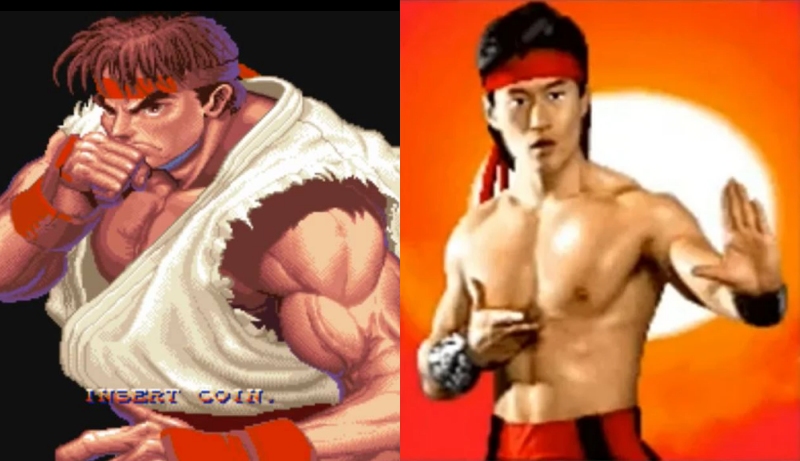
The Beginning of the Rivalry
The first iteration of Street Fighter II came out in February 1991. This was the sequel that made good on the promise of the 1987 original, which had great ideas that it couldn’t really execute. It would be bold to say that Street Fighter II perfected the formula, but it was such an improvement that it’s still incredibly playable to this day. It was a lucky break for Capcom, who would go on to milk the game’s success with several new editions of the title, from 1992’s Champion Edition all the way to 2017’s Ultra Street Fighter II: Final Challengers for the Nintendo Switch.
If you’re a fighting game aficionado, you know the history. The success of Street Fighter II sparked a boom for the fighting game genre. In Japan, SNK released Fatal Fury and Art of Fighting right on the heels of Capcom’s hit, while Alpha Denshi gave us World Heroes in ’92. Meanwhile, in America, Midway Games was planning its own Street Fighter II competitor, which was originally meant to be a tie-in game for the movie Universal Soldier starring Jean-Claude Van Damme. When that project fell through, Midway turned to the much gorier Mortal Kombat, a fighting game that digitized actors instead of sprites, an innovative approach to animation at the time.
Released on October 1992, Mortal Kombat was a major hit, and Midway quickly put out a sequel, Mortal Kombat II, six months later in April 1993. The third game would be out two years later. Mortal Kombat was speeding through its early days with cabinet after cabinet, while Capcom was focused on re-releasing newer versions of Street Fighter II. After making bosses playable, adding new characters, and tossing in other bells and whistles over the course of various upgrades, the studio concluded the game’s original run with 1994’s Super Street Fighter II: Turbo.
That meant that at a time when the internet was in its infancy, these two popular franchises were mainstays of print gaming magazines. Announcements, previews, reviews, secrets, tips, and so on. If your early ’90s magazine didn’t have at least a page dedicated to Street Fighter and/or Mortal Kombat, then get your eyes checked because you weren’t looking hard enough.
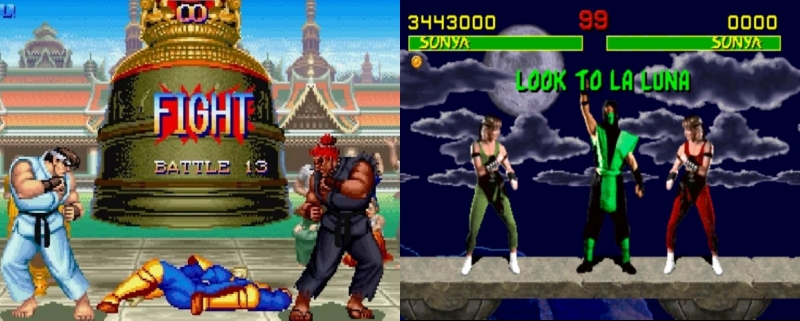
In 1992, Electronic Gaming Monthly famously pulled an April Fool’s Day gag on readers where they took the Street Fighter II mistranslation, “You must defeat Sheng Long to stand a chance,” and insisted it was a reference to a secret boss fight that involved working your ass off in the game in a way that was outright impossible, making your way through the game as Ryu without taking a single hit until your battle with M. Bison (and that was the “easy” part). The joke led to many stressful nights for gamers, who were finally told the truth about the hoax the following December.
But Midway took the idea of a secret boss more literally. Using the Sub-Zero/Scorpion ninja sprites, Midway introduced a green-clad fighter named Reptile, a seriously difficult opponent that you could only fight in arcade mode under some seriously ridiculous circumstances. Reptile was added in the 3.0 version of Mortal Kombat, making him the first secret boss in the genre’s history.
Capcom would eventually catch up with Akuma, a character extremely similar EGM‘s design for Sheng Long, in Super Street Fighter II: Turbo. By then, Midway had thrown in three more secret boss fights for Mortal Kombat II, and even SNK had already introduced Ryo Sakazaki as a secret final boss in Fatal Fury Special.
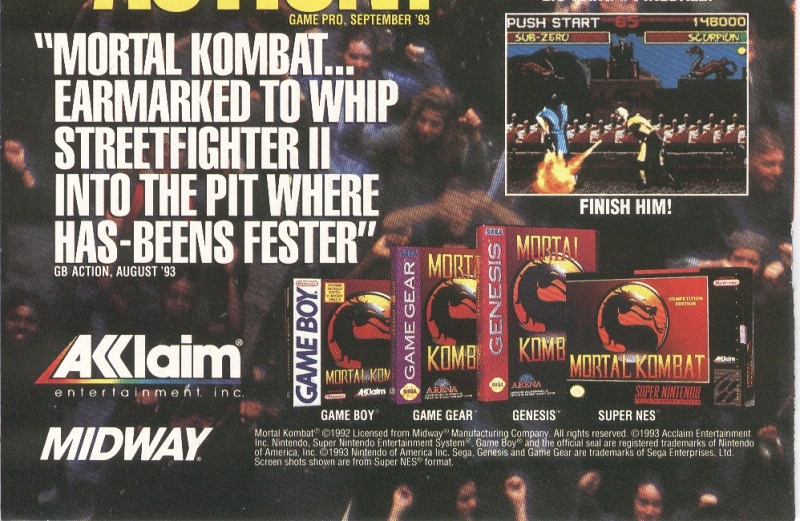
Brushing Shoulders
The Mortal Kombat series really thrived as a gorier and campier alternative to Street Fighter II‘s more fundamental approach to the genre, but that didn’t stop Midway from taking a couple of jabs at Capcom. In-game, secret characters would occasionally pop up before rounds and say something cryptic for the sake of helping the players figure out how to unlock their fight, a nod to the Sheng Long joke. But there were more direct pokes at the competition. For instance, Jade would occasionally appear for the sake of asking, “CHUN WHO?” and vanishing. Midway also included “RYU” as default initials on Mortal Kombat II‘s high score board. Cute.
Meanwhile, Capcom stoked the fire with a commercial for Street Fighter II: Champion Edition for Sega Genesis. It featured a security guard at a toy store coming across a box for the game. Blanka’s arm would thenreach out and grab the nearby box for Mortal Kombat and crush it into smoldering trash.
But it wasn’t all jabs. The two companies crossed paths in other interesting ways. In 1993, Malibu Comics published a Street Fighter II series for only three issues before having to drop it because Capcom was unhappy with Ken Masters’ grisly fate in the story. Around the same time, Malibu also launched a Mortal Kombat series, and the publisher would actually batch issues of both series together and send them to vendors.
Hasbro double-dipped when it came to action figures too, releasing sets for both Street Fighter and Mortal Kombat, complete with weapons and special vehicles. But while Street Fighter characters were treated like part of the GI Joe line, and were even featured in commercials where they all hang out and beat the crap out of Duke, Mortal Kombat was kept separate from Hasbro’s most popular figures.
Nintendo also used both franchises as major selling points for the Super Nintendo Entertainment System. The SNES ports for Super Street Fighter II and Mortal Kombat II both played big parts in Nintendo’s Play It Loud ad campaign. One such commercial even had a guy getting a massive Street Fighter vs. Mortal Kombat tattoo on his torso.
But the closest thing we’ve ever gotten to a real crossover between the two games was through their Saturday morning cartoons. Street Fighter and Mortal Kombat: Defenders of the Realm were both released as animated follow-ups to their live-action movies, although they were directly inspired by the games themselves. On Nov. 16, 1996, both series, as well as Savage Dragon and Wing Commander Academy, took part in a long-forgotten crossover event based around a hero named the Warrior King and his search through the multiverse for a special orb that controls the weather.
The Warrior King played a major role in his Street Fighter episode as the romantic interest of Chun-Li, while in Mortal Kombat, he merely made a quick cameo as a shadowy figure running through a portal. Regardless, both stories involved the villains (M. Bison and Shang Tsung) wielding the same mystical orb.
No, the crossover ain’t much, but that’s still more than what we got in Wreck-It Ralph. Although the Disney movie featured M. Bison, Zangief, Ryu, Ken, Chun-Li, and Cammy, it didn’t bring in any official Mortal Kombat characters to face them. Instead, the movie included “Cyborg,” a blatant Kano knockoff with the same cybernetic eye, goatee, and zest for heart-ripping. Why didn’t Disney just use Kano? Probably because he’s a Warner Bros. property. Still, missed opportunity.
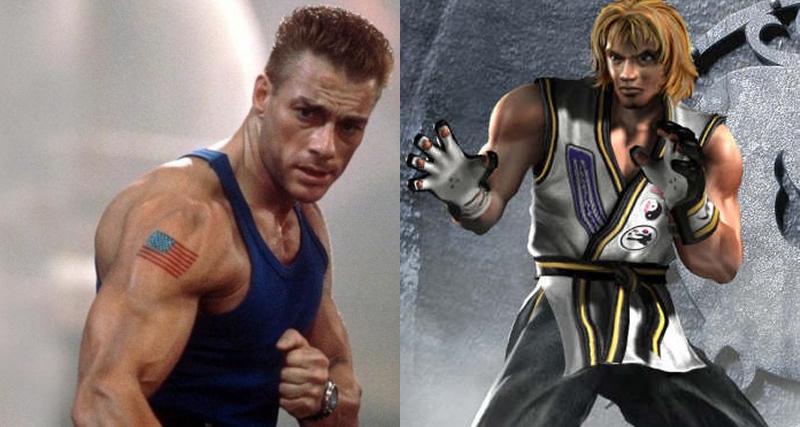
Copying Test Answers
The video game adaptation of Street Fighter: The Movie will always be a fascinating novelty. Released in 1995 in arcades, the game not only copied Mortal Kombat’s digitized actors but it actually featured Jean-Claude Van Damme, the actor Midway had been unable to secure for its own Universal Soldier tie-in years earlier.
Interestingly, whenever Capcom sets out to make a totally new Street Fighter game, the studio usually chooses to go in a new art direction. Street Fighter V is the exception, although Capcom did initially start with a more photorealistic art style before nixing it and going with “Street Fighter IV but extra.” So, when Capcom tapped Incredible Technologies to put together the video game version of Street Fighter: The Movie in 1995, it was at a time when the publisher was also considering using the digitized Mortal Kombat style for Street Fighter III. Thankfully, Capcom decided not to go in this direction.
Midway hilariously dipped its toe in Capcom’s waters a bit more blatantly in 2004. Mortal Kombat: Deception introduced a fighter named Kobra who was supposed to be the latest human POV character, only evil. But Midway initially named him “Ken Masters” due to his physical similarities to the Street Fighter character. The studio included “Ken” in a beta version of the game provided to the press, with the express direction NOT to mention the character.
Guess what happened next. A German publication posted the images of “Ken Masters” anyway, suggesting Mortal Kombat vs. Street Fighter was finally happening. Sadly, no, this was not a teaser for the long-awaited video game crossover. It seemes Midway just hadn’t come up with a proper name for “Ken Masters” yet.
Capcom did throw in a cute reference to Mortal Kombat in Marvel vs. Capcom 3. The game featured Nathan Spencer, the Bionic Commando, whose cybernetic arm could shoot out like a grappling hook and grab opponents from far away. When doing that to yoink an enemy towards him for a haymaker to the face, he’d quote Scorpion’s famous “GET OVER HERE!” Nice.
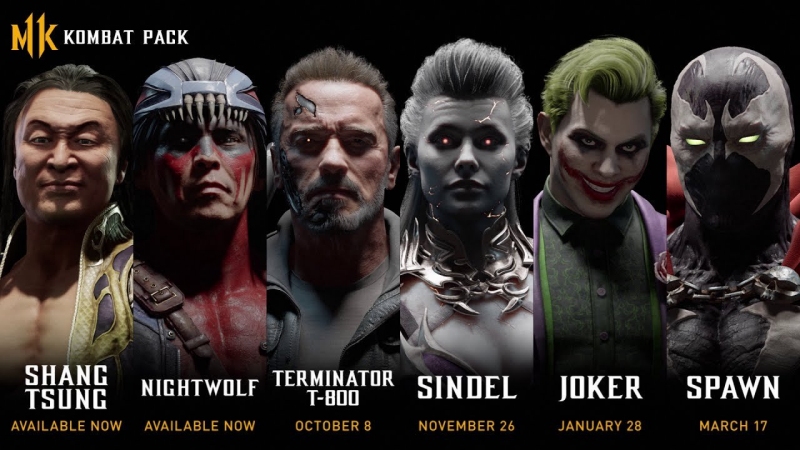
Not the Right Fit
Mortal Kombat co-creator Ed Boon admitted in 2008 that he’d tried to make Mortal Kombat vs. Street Fighter happen at one point but Capcom wasn’t interested.
“I’ve always wanted to cross MK over since about MK4, or something like that. I’m a big fan of all of the other fighting games, Street Fighter, Tekken. I always thought, wouldn’t it be cool to have MK vs. SF and MK vs. Tekken? We pursued some of those ideas to the extent we could but we always ran into some kind of road block and couldn’t do it.”
A full-on roster vs. roster situation was out back in the ’90s, but these days, guest characters are a normal part of fighting games. Tekken 7 alone includes representatives from Street Fighter, Fatal Fury, Final Fantasy, and The Walking Dead. Mortal Kombat and Injustice have gone all over the map with their DLC choices, including slasher villains, ’80s action heroes, Spawn, Hellboy, and even the Ninja Turtles. When a fighting game announces a new season of DLC, you usually know to expect at least one crossover character to be included in the package.
For 2019’s Mortal Kombat 11, Boon reached out to Capcom once again. Wouldn’t it be neat if a Street Fighter character got in on all the gritty time-traveling action? While we don’t know which character Boon was interested in using, many fans theorize Akuma would have been the perfect fit. But Capcom said no.
Here’s what former Street Fighter producer Yoshinori Ono had to say about it:
“It’s true that a proposal for a Street Fighter character in Mortal Kombat was rejected by Capcom, but it wasn’t me personally! There were many people at the company that felt that it wasn’t a good fit for our characters. I actually met Ed at the Brazil game show and spoke to him personally about it. So it’s true – but I didn’t make the decision!”
So why didn’t it happen? Probably because Mortal Kombat 11 is banned in Japan due to all the gore and extreme violence.
“I understand why people want it,” Ono said at the time, “but it’s easier said than done. Having Chun-Li getting her spine ripped out, or Ryu’s head bouncing off the floor…it doesn’t necessarily match.”
Maybe one day. For now, we’re left waiting for Ryu to finally get over here.
Special thanks to tabmok99 for helping with this article. You can check out his Mortal Kombat know-it-all YouTube channel here.
